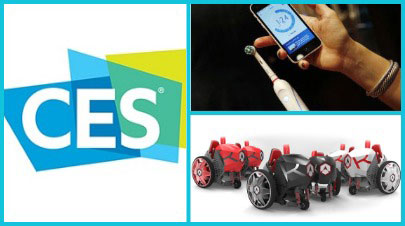
Cable management is the discipline of coordinating and optimizing the process of keeping cables, hoses, wires, and other electrical components organized and accessible. Cable management solutions assist organizations in optimizing performance by improving space utilization, reducing risk, and increasing efficiency. These solutions include organizational tools such as cable managers and solutions for wall runs and pits. An effective cable management strategy ensures that your cables are not just tangle-free but also easily accessible when you need them. Read on to find out more.
What is cable management?
Cable management refers to the process of managing cables within a computer system. Cables tend to be one of the most common problems in computer systems and can result in a wide range of issues, from reduced performance to increased maintenance costs. By properly managing cables, it is possible to reduce the chances of these problems occurring and keep your system running smoothly.
Cable management is a critical element of data center infrastructure. It is the process or methods used to organize cables and keep them organized. It makes sure that cables are not a tripping hazard, don’t interfere with other equipment, and are accessible when needed. It plays a crucial role in organizing your cable system so that you can find what you need when you need it. Keeping things organized will help save time and also avoid any potential problems, preventing any accidents from happening. Any data center needs an effective cable management system to stay tidy and avoid maintenance problems in the future. It reduces the risk of fire and helps increase uptime by reducing potential points of failure from snags and other hazards.
The Importance of Cable Management
Cable management is an important consideration when designing a data center. Unsightly cable messes can not only make a data center look unprofessional, but they also pose safety risks for operators and visitors. In addition, messy cables may be indicative of inefficiencies within the data center that could have long-term implications for operations.
With so many moving parts within a modern data center – from IT equipment to air conditioning and fire suppression systems – figuring out how to manage all those cables can seem like a daunting task.
Cable management is an important consideration for any PC build. It’s easy to get lost in the maze of cables that snake through a case, and it can be an eyesore if not done correctly. The key is to organize them so they don’t get tangled or bunch up on the floor. This can be as simple as grouping cables together by location (e.g., internal or external power, motherboard, I/O panel) or using cable ties to keep them in place. You can also use cable guides to make sure cables aren’t getting hung up on things like sharp corners.
It’s important to note that cable management isn’t just about physical space in the case; it’s also about airflow. There should be enough room behind the motherboard tray and around the CPU cooler so that air can flow through the case easily without being obstructed by cables. With the right strategy and understanding of best practices, cable management can become much easier to implement in your own data center.
Use Only High-Grade Cables
High-grade cables are the best way to protect your sensitive data and equipment. These are designed for professional use and should be used for all of your sensitive equipment. They have thicker insulation, a tighter weave, and better shielding than low-grade cables. This type of cable is resistant to water damage and can withstand high temperatures. High-grade cables are more expensive, but they’re well worth it in the long run. Because high-grade cables are made from higher-quality materials, they’re less likely to experience signal loss or degradation over time. They’ll also be able to withstand a greater amount of physical abuse.
High-grade cables are important for protecting against EMI (electromagnetic interference). This can come from a number of different sources, including electric motors and sensitive electronic equipment. When EMI is present in your environment, the data signals can be corrupted or lost altogether. High-grade cables help ensure that these signals can’t penetrate your network or make their way into your equipment.
To avoid overheating and poor performance, it is important that you use only high-grade cables when connecting your equipment. If you are using a low-quality cable, there is a chance that the signal will be distorted or delayed. In addition, if the cable is damaged, it can cause electrical shorts, which may damage your equipment. The type of cable that you choose depends on the length and power requirements of your device. You should also pay attention to the connector type and configuration, as well as the gauge and number of conductors in each conductor string.
Don’t Fill Cable Trays Too Full
The cable tray (same as the one in adjustable tables) is a crucial part of any home theater installation. This is where the coaxial cable gets connected to the A/V receiver and all of the other components of the system, such as a TV or Blu-ray player. The problem with overloading cable trays is that it can lead to increased signal degradation over time. This can cause picture and audio dropouts and can also affect the overall performance of your system. Therefore, it’s important to keep cable trays free from clutter and make sure you’re not using too many cables at once.
Another way to avoid overloading your cable tray is by using a splitter instead. Splitters allow you to connect multiple inputs to one TV or another display device without having to run long cables across the room. There are also some additional things you can do to help keep your cable trays free from clutter. First off, make sure all cables are securely held in place so that they won’t accidentally disconnect. Next, make sure all connections are secure so that they don’t easily disconnect from one another. Finally, try to remove any excess slack from all of your cables so that they don’t get tangled up unnecessarily.
All Cables Should be Labeled
Every cable needs to be labeled, especially ones that are being used for the first time. This is especially important if they are being used on multiple devices or locations. By labeling your cables, you can easily tell which one goes to devise A and which one goes to device B. You should also label both ends of each cable so that there is no confusion as to where it will plug in. Some cables are too small to be labeled, making it difficult for customers to locate the correct cable when they are looking in the wrong place.
To label your cables, simply write the name of the cable on the cable itself. You can also use labeling tags to help customers find their cables more easily. It is also important to label all cables, whether they are visible or not. It is easy for a customer to get confused by an unmarked cable, so you should make sure that all cables are labeled before you start selling products. By labeling your cables, you will be able to provide excellent customer service and ensure that your customers have a pleasant shopping experience.
There are a number of different types of cable labels available on the market today, including stickers and temporary tattoos. While these are great for quick labeling, they aren’t recommended for long-term use. These can easily fade and become damaged over time. You should also consider investing in a cable labeling system, which allows you to clearly mark each port and plug with tape or labels.
Color-Coded Cables
Color-coded cables are a great way to ensure that you’re all on the same page when it comes to working on a project. These cables come in a variety of colors and have different meanings depending on the context in which they are used. They are typically used by teams working together on various projects and can help to avoid confusion and promote communication. One of the most common uses for color-coded cables is to designate different teams responsible for different parts of a project. For example, if you’re working on a renovation project, it might make sense to mark different phases, such as “Foundation,” “Framing”, and “Painting/Wallpaper/Veneer.” This way, people know what needs to happen next and when they need to start or finish specific tasks.
There are different types of cables you can use for color-coding your computer. There are different types of cables you can use for color coding your computer. USB Type-A (female) cables connect peripherals to a USB port or hub, whereas USB Type-B (male) cables are used for peripheral connections. HDMI cables connect devices with a video output to an HDMI-equipped display, whereas DVI-D/DVI-I and DisplayPort cables provide digital video and audio connections between two devices. RCA (phono) cables connect a home audio system to speakers and/or an amplifier. Or use CEE7/5R’s “RGB Code” cable, which has 4 conductors in one cable (1+3+5+7). It’s really easy to distinguish red from green from blue by looking at the nearest conductor in each pair, and it only takes a few seconds to remember them.
Cables come in different colors:
- Red: Neutral wire
- Brown: A power wire
- Blue: Signal wire
- Black: Ground wire
- White: Optical fiber cables
- Orange: Video signal cable
- Green: Audio signal cable
- Yellow: Data cable
- Gray: Control wires
- Green: Ethernet Cable
- Blue: Phone line cable
- White/Yellow/Silver: Computer power supply Yellow/White/Blue/Black/Orange/Red/Green/Purple: DVI-D (Digital Visual Interface-Digital Display Interface) Cable
Utilize Only Top-Notch Terminations
One of the most overlooked issues in cable management is the quality of the termination. Quality terminations are only as good as their weakest link, and poor terminations will inevitably cause problems. Use only quality terminations in your cabling management, and you won’t have to worry about the quality of your cables. When using DIY cable management, make sure that you use high-quality zip ties or wire nuts. You can also use metal cables for better connections, which are less prone to failure. One thing you don’t want to do is run a loose connection through some sort of coiled tube. This is a quick way to get a cable cut, which drastically reduces its lifespan.
Failure to properly terminate or shield cables can lead to a number of reliability problems. These problems include poor performance, interference, and damage. In addition, poor quality terminations can lead to reduced performance and increased cable length. And when cables are too long, they become more expensive to manage and maintain. So, make sure that all of your cable terminations are of high quality and designed specifically for your application. Also, be sure to inspect them regularly for signs of damage and wear. Finally, ensure that you keep all of your cable terminations organized so that they are easy to find—even in the tight spaces where they are most likely to get lost. By following these simple guidelines, you can ensure that your cables will perform at their best every time.
Keep Cable Length in Mind
Cable management is one of the most important aspects of any computer setup. It’s vital to keep power cables, data cables, and peripheral cables organized and out of the way. Cables are a major source of clutter and frustration in any business environment. They can be difficult to manage, especially when you’re trying to organize multiple devices. One common problem is excess cable length. This is especially true for power cables, which may need to be routed around other equipment and furniture in your office.
To reduce the risk of tripping over cords and getting caught up in your own mess, take a few minutes to consider how much cable you need for each device you want to connect. The first step is to figure out how long your cables need to be before they can be pulled around. You have to start with a basic rule of thumb – anywhere from 5 to 20 inches is a good place to start, depending on what you’re going to be doing with the cable and what type of cable it is.
Then, plan ahead by paying attention to where your cables run when you’re building out new installations or rearranging existing infrastructure. For example, if you have a power cable that needs to be long enough for your whole desk, then it should be at least five inches in length. If you don’t want any slack in your cables, then make them as short as possible without cutting them off at their ends. This makes for a more professional look as well as keeps everything neat and tidy.
Conclusion
The cable management system is an important part of any office setting. It can be used as a tool to organize cables and wires, as well as to keep them out of sight. If you want to be able to use your computer in the most effective way possible, then you need to have a cable management system that works with your computer and your needs. The best cable management system will allow you to store all of your cables in one place so that they are easy to find when needed. A good cable management system will also allow you to organize them according to their type and function.
The goal of cable management is to provide an aesthetically pleasing and functional workspace that is organized, efficient, and clean. The best way to achieve this goal is by making sure all cables are secured in their place, as well as planning out your workspace in advance to make sure that everything fits. Cable management can be a difficult process and requires a lot of trial and error. However, with practice, you will become more efficient at managing your cables.
Know more about strategies and solutions for cable management? Leave a comment below.




